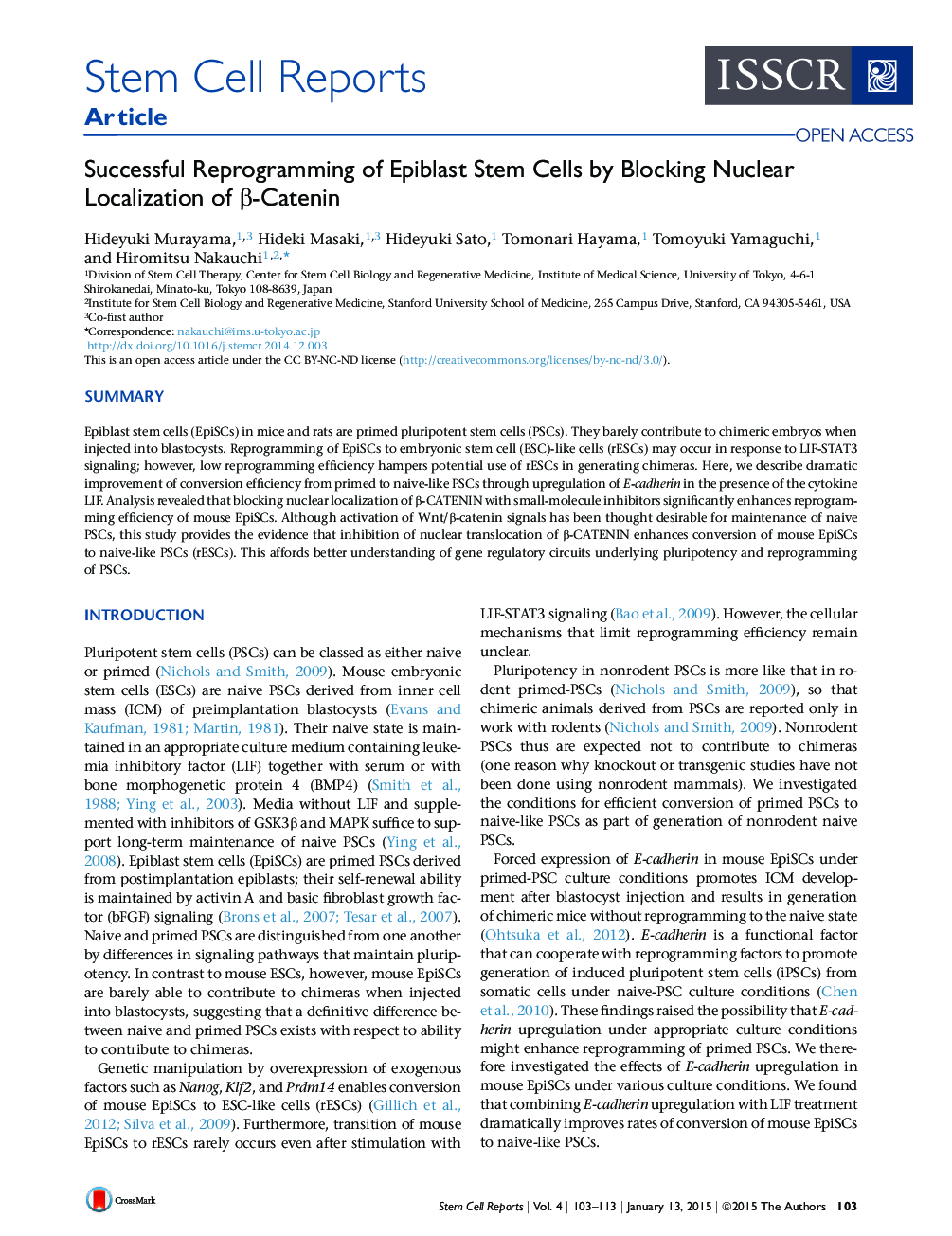| Article ID | Journal | Published Year | Pages | File Type |
|---|---|---|---|---|
| 2093649 | Stem Cell Reports | 2015 | 11 Pages |
•E-cadherin overexpression considerably increases reprogramming efficiency of EpiSCs•E-cadherin overexpression negatively regulates β-catenin signaling in EpiSCs•Blocking nuclear localization of β-CATENIN enhances reprogramming of EpiSCs
SummaryEpiblast stem cells (EpiSCs) in mice and rats are primed pluripotent stem cells (PSCs). They barely contribute to chimeric embryos when injected into blastocysts. Reprogramming of EpiSCs to embryonic stem cell (ESC)-like cells (rESCs) may occur in response to LIF-STAT3 signaling; however, low reprogramming efficiency hampers potential use of rESCs in generating chimeras. Here, we describe dramatic improvement of conversion efficiency from primed to naive-like PSCs through upregulation of E-cadherin in the presence of the cytokine LIF. Analysis revealed that blocking nuclear localization of β-CATENIN with small-molecule inhibitors significantly enhances reprogramming efficiency of mouse EpiSCs. Although activation of Wnt/β-catenin signals has been thought desirable for maintenance of naive PSCs, this study provides the evidence that inhibition of nuclear translocation of β-CATENIN enhances conversion of mouse EpiSCs to naive-like PSCs (rESCs). This affords better understanding of gene regulatory circuits underlying pluripotency and reprogramming of PSCs.
